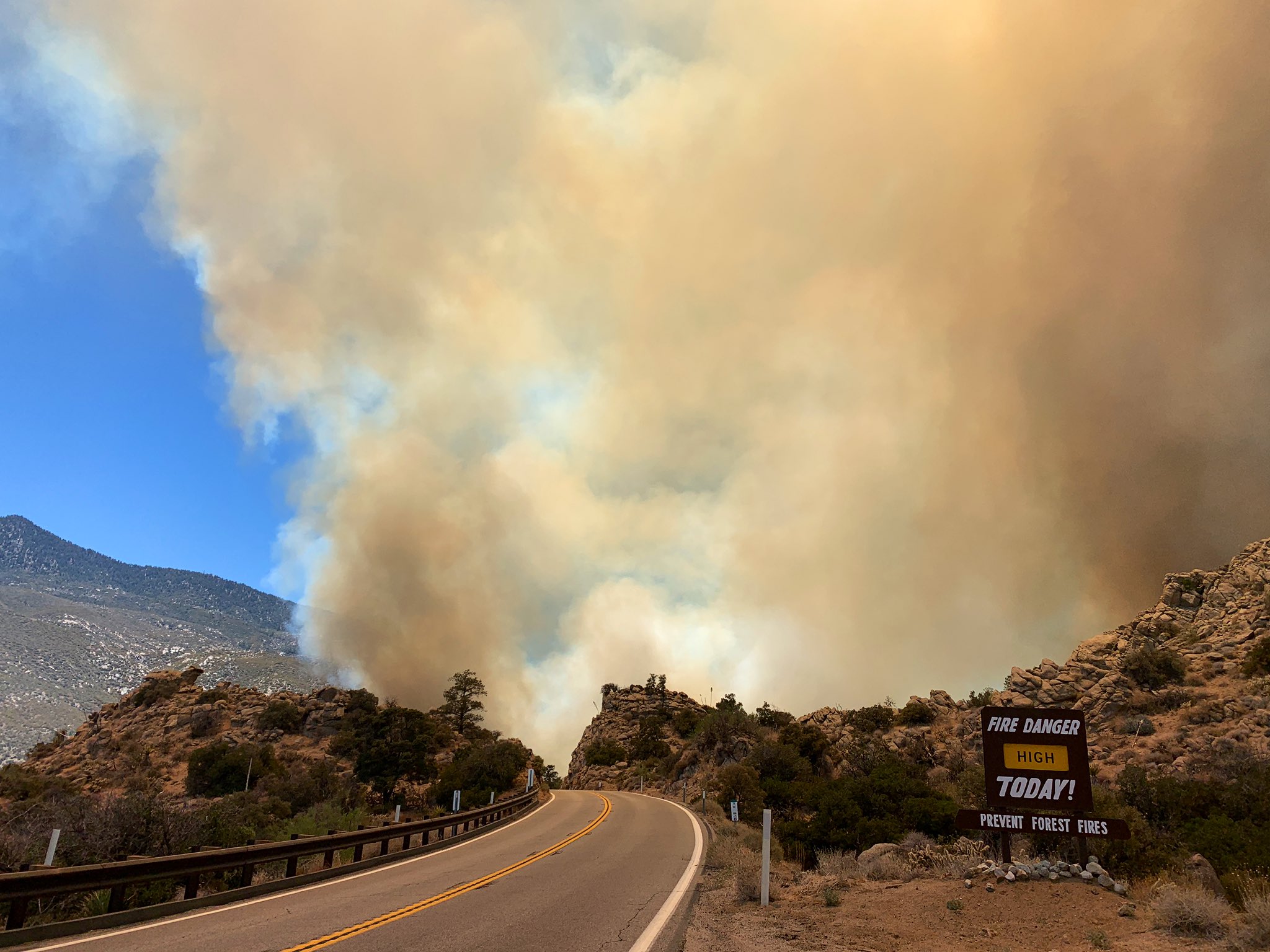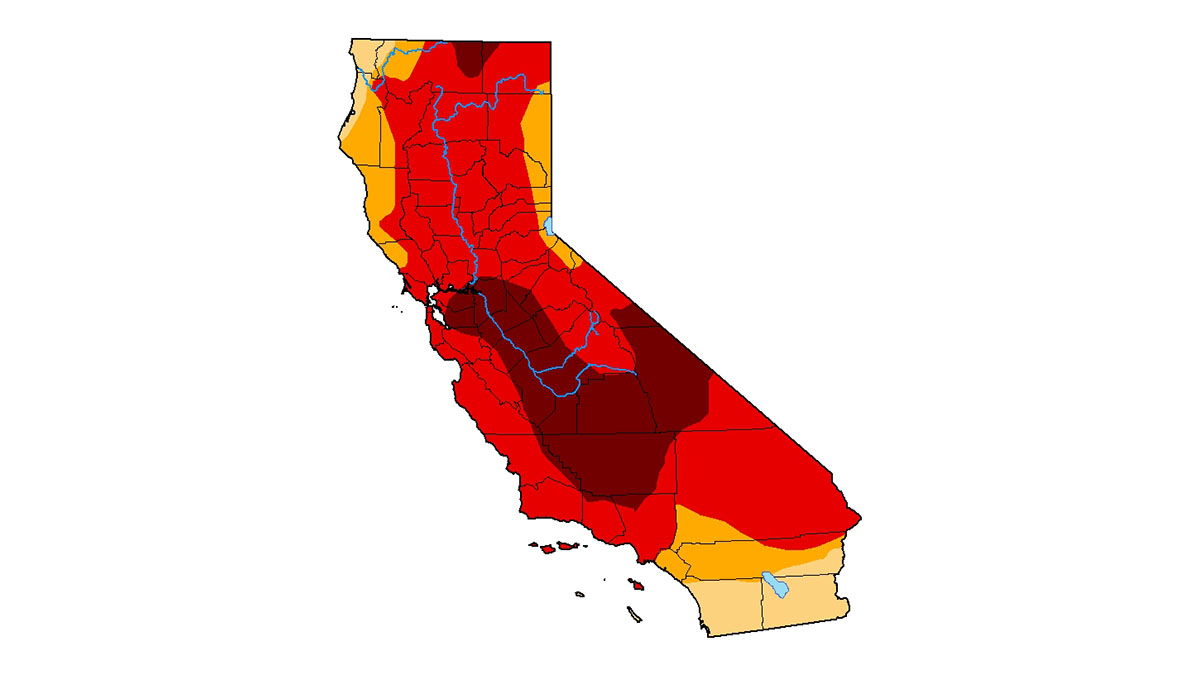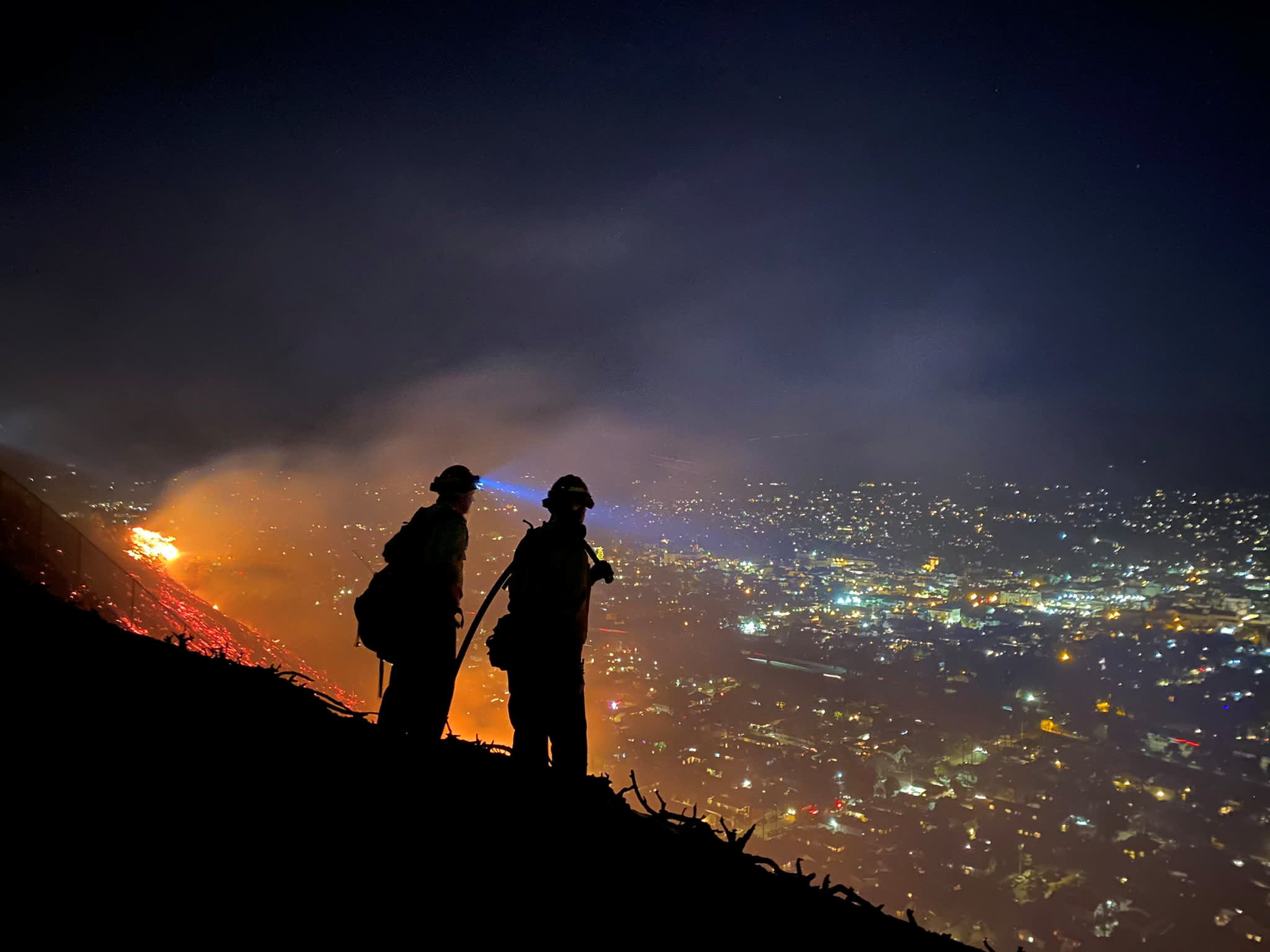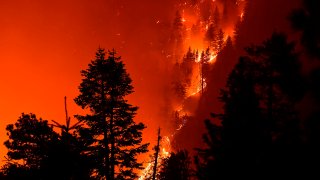
On Wednesday, fire management officials at the U.S. Forest Service raised the Fire Danger Level in the Angeles National Forest to "Very High," due to a combination of extreme heat, low humidity and record drought conditions.
The Fire Danger Rating System is used nationwide by the U.S. Forest Service, to estimate the risk that a fire will start in a plant-filled area. The model looks at "fuels, weather, topography and risks" as danger factors, and ranges from "Low" to "Extreme" ratings.
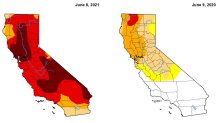
Based on the level of risk, people in and near the national forest can decide whether to start a campfire, start their vehicles in dry grassy areas, burn debris or use equipment that may produce sparks.
Get top local stories in Southern California delivered to you every morning. Sign up for NBC LA's News Headlines newsletter.
"Very High" is the third-highest danger level on the scale.
Under a "Very High" danger level, visitors face the following restrictions:
- No Fireworks
- No shooting of tracer, armor piercing, steel core, or Teflon ammunition.
- Welding, grinding, cutting and use of explosives only with proper permit.
- Spark arrestors are required on off-highway vehicles, chainsaws, and other equipment.
- Wood and charcoal fires in designated sites only, in agency-provided campfire rings and stoves.
- Gas and petroleum jelly stoves only outside of designated sites with a valid California Campfire Permit.
- Smoking in enclosed vehicles, developed recreation sites, or areas cleared 3-foot in diameter.
- Additional geographic areas may be closed due to special circumstances.
As of June 16, the following restrictions are in place for the Angeles National Forest:
- Open wood and charcoal fires will still be permitted in approved “developed” campgrounds and picnic areas where a steel ring or stoves are provided.
- Propane or jellied gas stoves and grills are permitted in non-developed areas with a valid California Campfire Permit.
- Smoking is allowed in enclosed vehicles or developed recreation sites only.
- Drivers in the forest should stay on designated roads and never park on dry brush or grass to avoid the risk of starting a fire.
According to a statement from the U.S. Forest Service, "parched soil, dry, dead grasses and vegetation, and now a dangerous heat wave is raising major concerns for potential wildfires." Those factors combined with wind would make fighting a forest fire much more challenging, if one were to start.
“We’re easily a month or more ahead of fire weather conditions for this time of year," Angeles National Forest Fire Chief Robert Garcia said.
Last year nearly 23% of the Angeles National Forest was impacted by major wildfires, and more than 20 wildfires started over the Fourth of July holiday weekend alone.
"Elevating the fire danger enhances public awareness, especially ahead of the popular July 4th weekend," which the U.S. Forest Service said is usually the busiest day for the Angeles National Forest.
Many of those 20 wildfires were started as the result of illegal fireworks, but all were successfully stopped before they could grow out of control.
Also in 2020 was the Bobcat Fire, which burned through more than 180 square miles and some of the Angeles’ most beautiful wildlands. It is now the second most destructive fire in Los Angeles County to date, after the 2009 Station Fire, according to the U.S. Forest Service.

